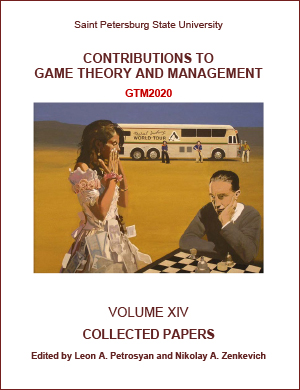Optimal Stopping in the Balls-and-Bins Problem
DOI:
https://doi.org/10.21638/11701/spbu31.2021.14Abstract
This paper considers a multistage balls-and-bins problem with optimal stopping connected with the job allocation model. There are N steps. The player drops balls (tasks) randomly one at a time into available bins (servers). The game begins with only one empty bin. At each step, a new bin can appear with probability p. At step n (n = 1, . . . ,N), the player can choose to stop and receive the payoff or continue the process and move to the next step. If the player stops, then he/she gets 1 for every bin with exactly one ball and loses 1/2 for every bin with two or more balls. Empty bins do not count. At the last step, the player must stop the process. The player's aim is to find the stopping rule which maximizes the expected payoff. The optimal payoffs at each step are calculated. An approximate strategy depending on the number of steps is proposed. It is demonstrated that the payoff when using this strategy is close to the optimal payoff.
Keywords:
optimal stopping, job allocation, balls-and-bins problem
Downloads
References
Downloads
Published
How to Cite
Issue
Section
License
Articles of "Contributions to Game Theory and Management" are open access distributed under the terms of the License Agreement with Saint Petersburg State University, which permits to the authors unrestricted distribution and self-archiving free of charge.




